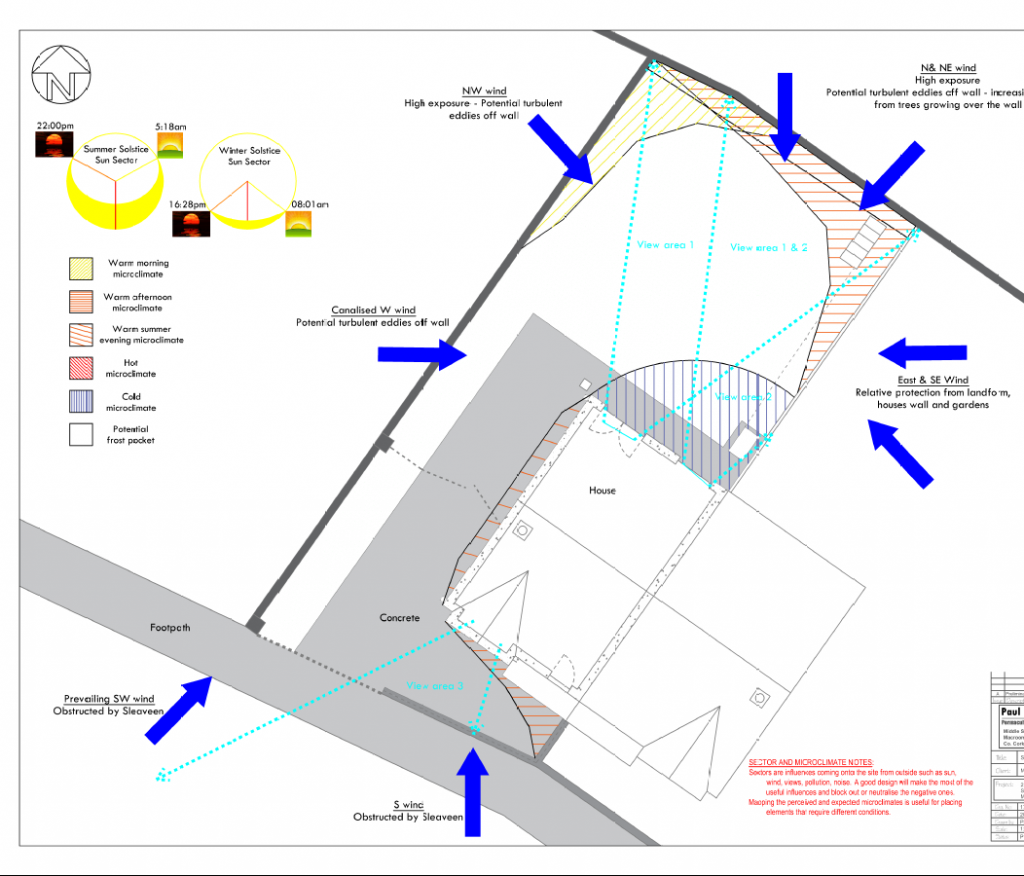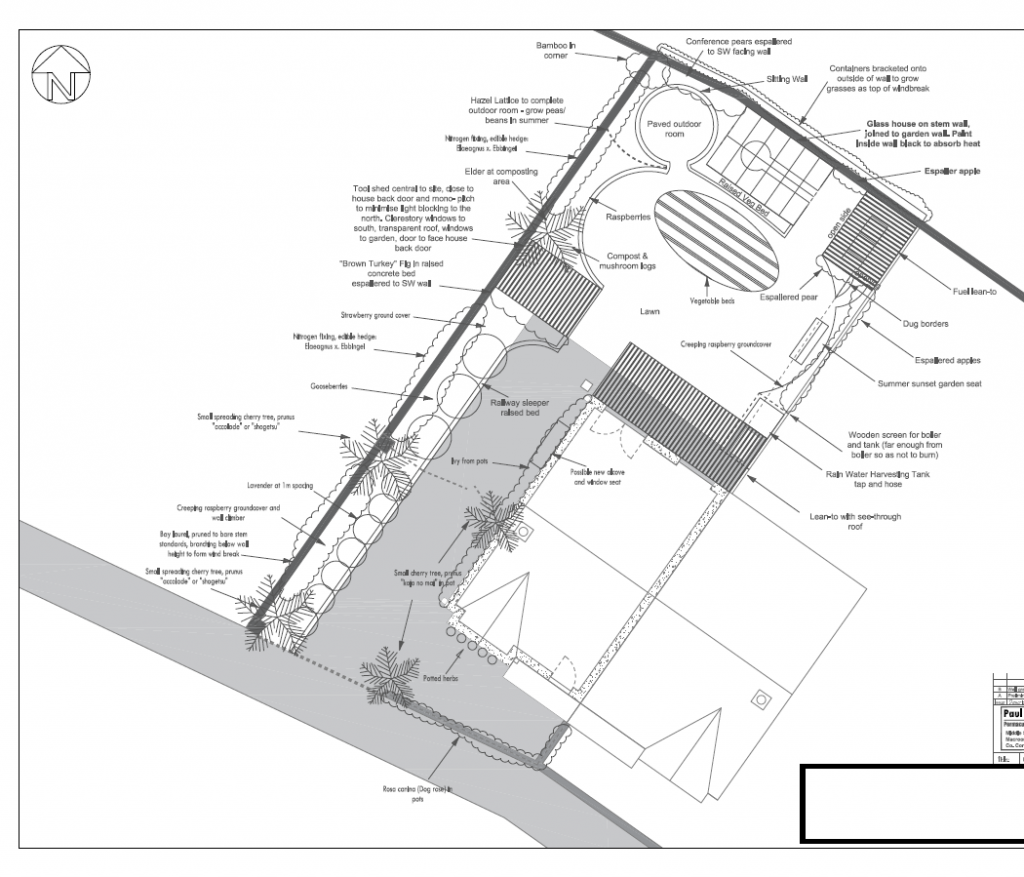Permaculture Design - an Art and a Science
Permaculture design is more than a collection of sustainability ideas and methods – it organises them and puts them to work in an elegant, energy-efficient, site-specific plan. It requires art and science.
Our permaculture design process is methodical in its approach – there is a logical sequence of work to be done to arrive at a good design. It is a process that sets up the conditions within the designer for the most elegant solutions to reveal themselves. After thorough survey work, a number of elegant solutions will be calling for attention in the mind of a creative individual.

Permaculture is a philosophy of working with, rather than against nature; of protracted and thoughtful observation rather than protracted and thoughtless labor; and of looking at plants and animals in all their functions, rather than treating any area as a single product system
Bill Mollison
Design Sequence
- Survey
- Analyse
- Design
- Implement
- Maintain
- Evaluate
- Tweak
In permaculture design we often refer to this design squence with is to with its acronym SADIMET. It is a logical step by step process that helps the designer see the underlying form of the site and the its key characteristics and patterns before designing. It also allows for the realities of designing and working with nature. Inanimate products of design have a limited life-span while nature will carry on.
This methodical approach takes time, but far less than trying to retrieve an inefficient set-up arrived at in haste.


The illustrations above and below show part of the process for a small garden permaculture design I completed in Cork, Ireland. First I produced a sectors and micro-climates map during survey & analysis work for the design.
Later (in a moment of inspiration) I made a rough sketch of a possible layout. Later again I developed this further by moving and placing the elements of the design so as to create as many mutually beneficial relationships as possible between them.
This process reached a natural conclusion with an elegant design that marries the needs of the people with the natural gifts of the site.


Conclusion
Good permaculture design is a unifying discipline where art and science collaborate again. Uniting these seemingly separate modes of thought is fundamental to how we design and vital to heal an increasingly polarised world. We indebted to the late Robert Pirsig for developing this idea in his book Zen and the Art of Motorcycle Maintenance.
“The artist is not a special kind of man, but every man is a special kind of artist”
- Ananda Coomaraswamy
